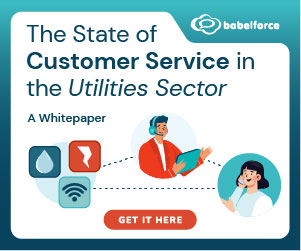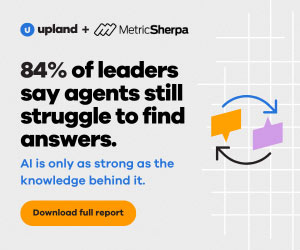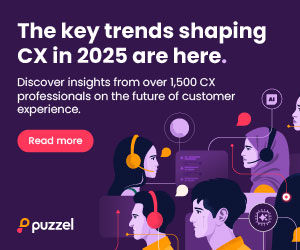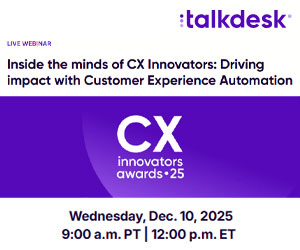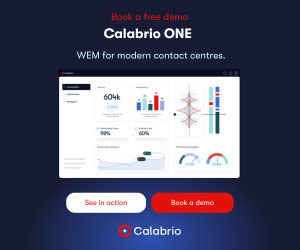When it comes to investing in technology, it’s natural to search for that “one perfect tool” that solves everything.
But the truth is, there’s no silver bullet.
To find out more, we asked Jack Barton, Head of Marketing at babelforce, to explain that rather than focusing on a single flashy solution, the best-performing contact centres focus on orchestration – making all your existing systems work together.
Video: Choosing Tech: It’s Not Going to Come Down to One Tech Purchase
Watch the video below to hear Jack explain how contact centre leaders can identify and choose what technology they need next and how it’s not always going to come down to one tech purchase:
With thanks to Jack Barton, Head of Marketing at babelforce, for contributing to this video.
This video was originally published in our article ‘What Tech Should You Buy Next? Here’s How to Choose’
Why Your Next Tech Investment Shouldn’t Be a Single Tool — It Should Be Orchestration
You might find yourself asking, “What’s the one investment we need to make to transform our CX?” The honest answer? There isn’t one.
The idea that a single piece of technology will overhaul your contact centre is a myth worth retiring right now.
Instead, success lies in understanding how to optimize what you already have – and orchestrate it effectively.
Stop Searching for the “Silver Bullet” Solution
If you follow current trends, chances are you’ll land on an AI solution. And yes, many of them look fantastic in a demo.
“The question is where should you spend your money when you’re looking to invest further in your CX. What’s the one tool that you don’t have that’s going to solve all of your problems?
And the answer is that there isn’t one, so we can just put that idea to bed right away. It’s not going to come down to one purchase, but you can still moneyball the problem and find out where the biggest return on investment might be for you.
If you follow the crowd at the moment, you’ll end up by an AI tool, obviously, probably something that looked really good in a demo. And if you do awesome, one of our products is an AI Voicebot so I’m not going to talk that down.”
Tools like AI voicebots are genuinely useful and can deliver serious impact. But even the best standalone product won’t transform your operations if it can’t connect seamlessly with the rest of your tech stack.
CX isn’t about flashy features, it’s about performance, cohesion, and scalability. That’s why the real focus should be orchestration.
Why Orchestration Should Come First
Orchestration is about making your systems work together in harmony, which means:
- Integrating tools across your tech ecosystem
- Enabling data flow between platforms to preserve customer context
- Designing customer journeys that leverage insight from across those systems
Without orchestration, every tool becomes an isolated silo. With it, you create a responsive, data-informed, and agile CX environment.
When you eventually invest in something like an AI tool, orchestration ensures it’s not just a bolt-on, as Jack explains:
“When we look at the call centre customers, in basically any industry, they always do better if they think about orchestration first.
Orchestration is a big topic, and it can be quite abstract, but I basically mean gaining the ability to integrate different systems, making data travelable to maintain customer context, and finding ways to build customer journeys that can make use of the data from across those different systems.
And that means if you do then decide that the flashy new AI product would be helpful to you, it’s not just something that you bolt on to your existing service.
It’s able to offer specific journeys based on customer data from the context in your CRM, it will be able to transcribe and store what happens during a conversation, either to add that new information to a ticket, or to help out the agent it’s transferring to.”
Instead, it becomes a true enhancement, one that pulls live context from your CRM, transcribes and stores conversations, updates tickets, and supports agents with the information they need in real time.
The Spielberg Analogy: AI Is the Star, but Orchestration Is the Director
One customer recently described generative AI tours as Harrison Ford in Indiana Jones: the hero, the headliner, the face of the story.
But what makes the movie actually work is the direction, Steven Spielberg behind the camera, orchestrating every scene.
“Someone recently said to me that any gen AI tour is like Harrison Ford in Indiana Jones, it’s the star, it’s the attention-grabbing element, but Indiana Jones is only good because Steven Spielberg was behind the camera, and without him Harrison Ford doesn’t know what to do.”
That’s how you should think about your CX stack. AI might be the star, but orchestration is what makes it all work.
Without it, even the most advanced tools won’t know what to do or how to interact within your environment.
Ask the Right Question Before You Buy
Before investing in anything new, pause and ask: Is our current tech stack working at peak performance?
If the answer is no, the solution isn’t to add more tech, it’s to make what you have work better together.
“So when you’re investing, the first question is does our existing text stack already work at peak performance? If not, the solution is not to add more stuff, it’s to orchestrate the stuff you already have.”
Only once your systems are aligned and your data is actionable should you consider new investments.
If you are looking for more great insights from the experts, check out these next:
- 3 Ways to Reduce Burnout and Keep Agents Engaged
- How to Improve Agent Consistency With Analytics
- Ways to Reduce and Improve Call Transfers
- Digital Literacy: How to Train Agents to Work Alongside AI Tools
Author: Robyn Coppell
Reviewed by: Xander Freeman
Published On: 5th Jun 2025 - Last modified: 25th Sep 2025
Read more about - Video, babelforce, Jack Barton, Videos




